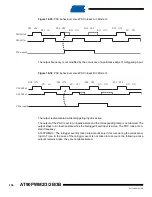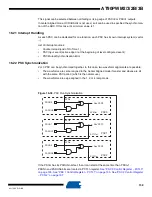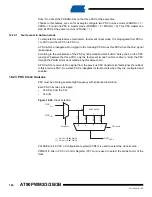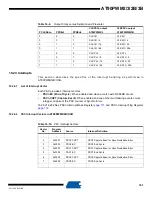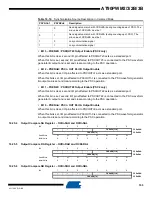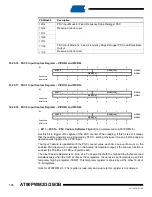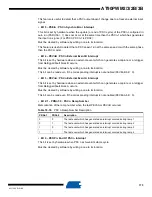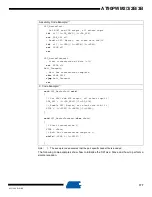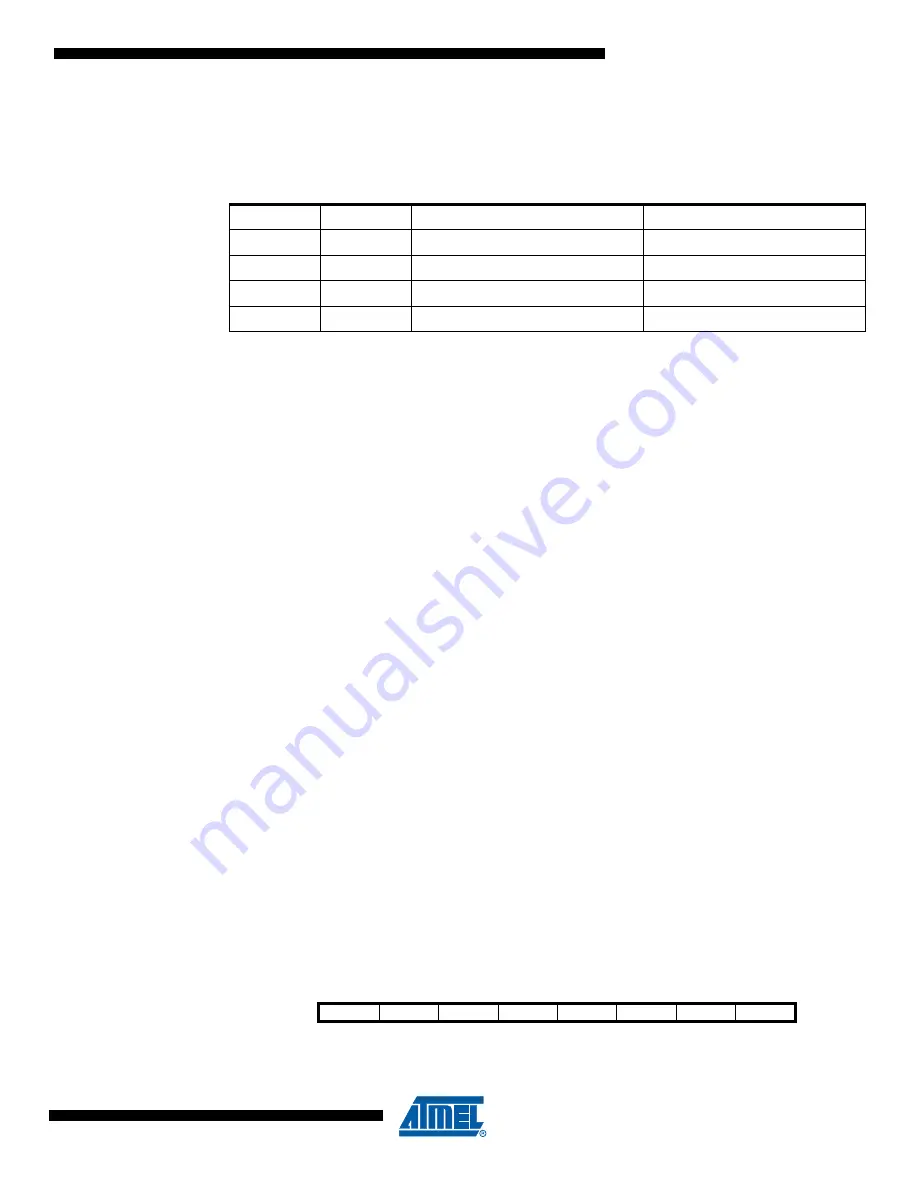
167
4317I–AVR–01/08
AT90PWM2/3/2B/3B
• Bit 7:6 – PPRE11:0 : PSC 1 Prescaler Select
This two bits select the PSC input clock division factor.All generated waveform will be modified
by this factor.
• Bit 5 – PBFM1 : Balance Flank Width Modulation
When this bit is clear, Flank Width Modulation operates on On-Time 1 only.
When this bit is set, Flank Width Modulation operates on On-Time 0 and On-Time 1.
• Bit 4 – PAOC1B : PSC 1 Asynchronous Output Control B
When this bit is set, Fault input selected to block B can act directly to PSCOUT11 output. See
Section “PSC Clock Sources”, page 160
• Bit 3 – PAOC1A : PSC 1 Asynchronous Output Control A
When this bit is set, Fault input selected to block A can act directly to PSCOUT10 output. See
Section “PSC Clock Sources”, page 160
• Bit 2 – PARUN1 : PSC 1 Autorun
When this bit is set, the PSC 1 starts with PSC0. That means that PSC 1 starts :
•
when PRUN0 bit in PCTL0 register is set,
•
or when PARUN0 bit in PCTL0 is set and PRUN2 bit in PCTL2 register is set.
Thanks to this bit, 2 or 3 PSCs can be synchronized (motor control for example)
• Bit 1 – PCCYC1 : PSC 1 Complete Cycle
When this bit is set, the PSC 1 completes the entire waveform cycle before halt operation
requested by clearing PRUN1. This bit is not relevant in slave mode (PARUN1 = 1).
• Bit 0 – PRUN1 : PSC 1 Run
Writing this bit to one starts the PSC 1.
When set, this bit prevails over PARUN1 bit.
16.25.13 PSC 2 Control Register – PCTL2
Table 16-15. PSC 1 Prescaler Selection
PPRE11
PPRE10
Description PWM2/3
Description PWM2B/3B
0
0
No divider on PSC input clock
No divider on PSC input clock
0
1
Divide the PSC input clock by 4
Divide the PSC input clock by 4
1
0
Divide the PSC input clock by 16
Divide the PSC input clock by 32
1
1
Divide the PSC clock by 64
Divide the PSC clock by 256
Bit
7
6
5
4
3
2
1
0
PPRE21
PPRE20
PBFM2
PAOC2B
PAOC2A
PARUN2
PCCYC2
PRUN2
PCTL2
Read/Write
R/W
R/W
R/W
R/W
R/W
R/W
R/W
R/W
Initial Value
0
0
0
0
0
0
0
0




